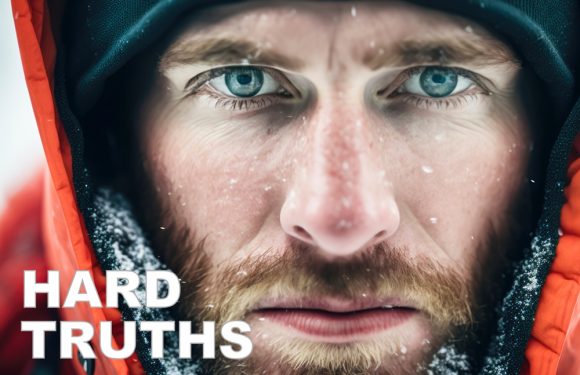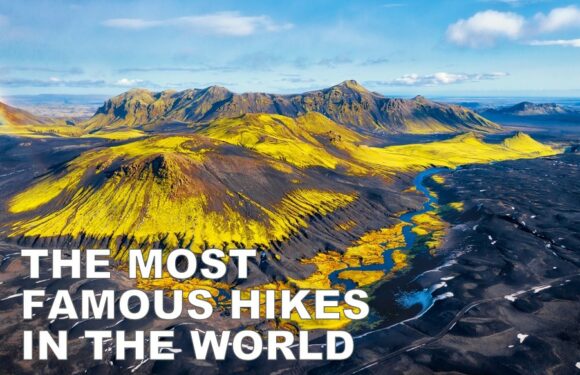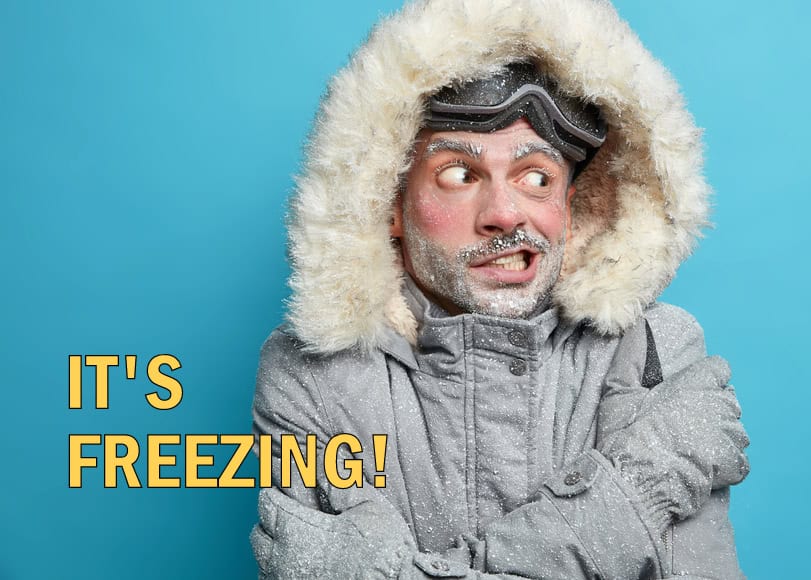
Many climbers are surprised by how cold it gets on Mount Kilimanjaro.
The mountain’s unique geography means that it has a wide range of temperatures depending on the altitude. At the base, temperatures are relatively mild, but as you climb higher, temperatures fall dramatically. The summit, Uhuru Peak, can be incredibly cold, often dipping well below 0°F (-18°C) at night. You should be prepared to endure temperatures as cold as -20°F (-29°C) on your climb.
Temperature at Different Climate Zones
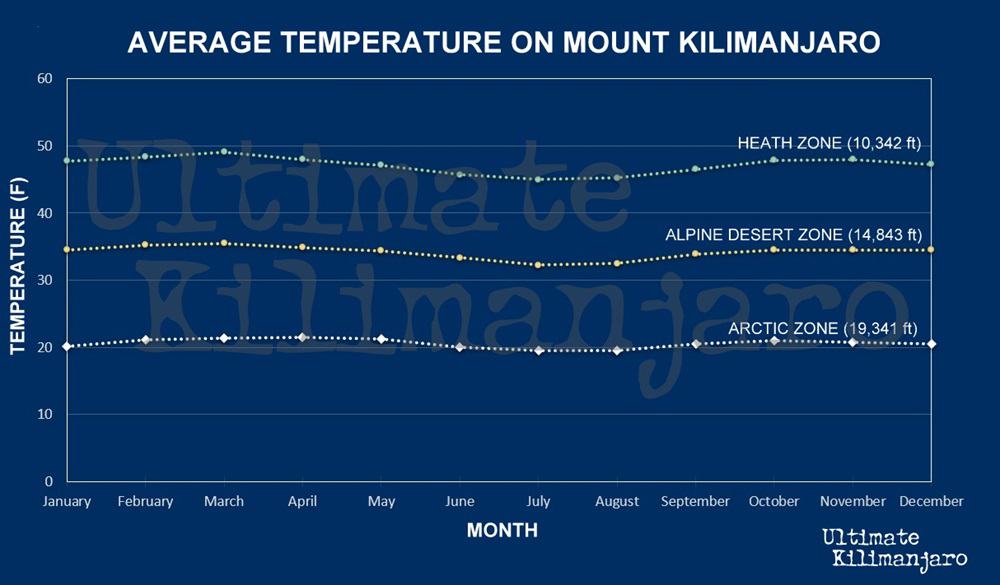
Mount Kilimanjaro has five distinct climate zones, each with its own temperature range:
- Bushland/Cultivated Zone – 2,600 to 6,000 ft (800 to 1,800 m):
The cultivation zone is marked by farmland, grasslands, and human settlements. It serves as prime agricultural land due to its fertile volcanic soil. The average temperatures range from 60°F to 80°F (16°C to 27°C). - Rainforest Zone – 6,000 to 9,200 ft (1,800 to 2,800 m):
The lower sections of the mountain are warm and humid, with daytime temperatures typically ranging from 70–80°F (21–27°C). At night, temperatures drop to 40–60°F (4–15°C). It can also be damp due to high humidity and frequent rain. - Heath/Moorland Zone – 9,200 to 13,200 ft (2,800 to 4,000 m):
Temperatures begin to cool in this zone, characterized by low-growing, woody vegetation. The daytime averages between 40–70°F (4–21°C). At night, it can drop to around freezing. - Alpine Desert Zone – 13,200 to 16,500 ft (4,000 to 5,000 m):
In the alpine desert zone, the air becomes much thinner, and temperatures drop further. During the day, typical temperatures range between 30–40°F (-1 to 4°C), but it can be much warmer. At night, it often plunges below freezing, and the dry air adds to the chilling effect. - Arctic Zone/Summit – 16,500+ ft (5,000+ m):
The summit area is the coldest part of Kilimanjaro. Daytime temperatures are low, often struggling to rise above freezing. Nighttime temperatures often fall below 0°F (-18°C), and can be as chilly as -20°F (-29°C). Climbers may also experience strong winds that make it feel even colder. Your gear will need to keep you warm for up to eight hours under these conditions during summit night. Once the sun rises, the temperature also rise and generally become much easier to tolerate.
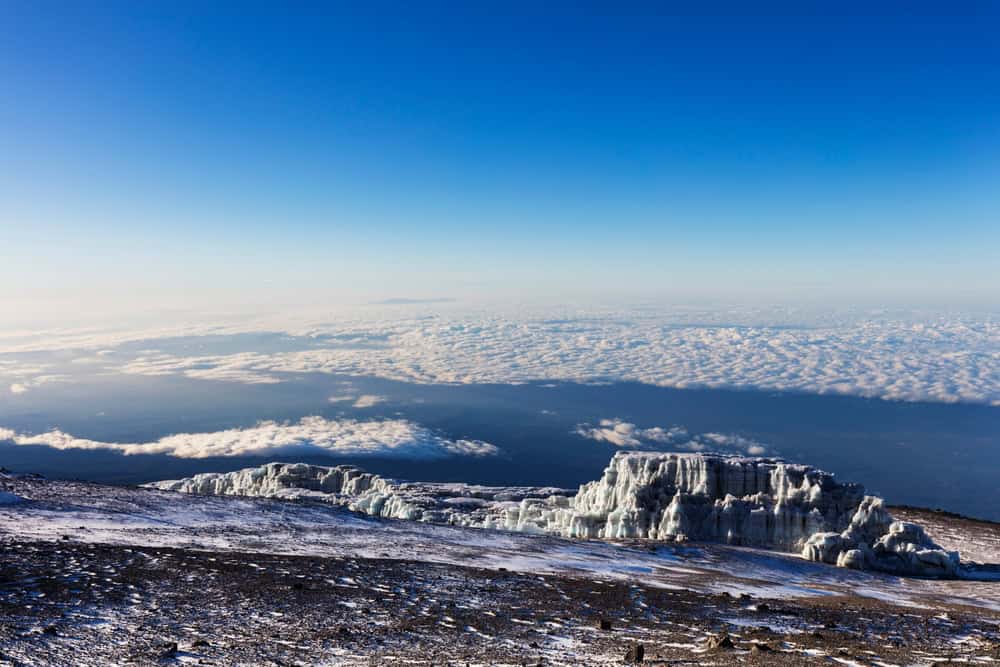
What Is the Coldest Time of Year on Kilimanjaro?
While Kilimanjaro’s weather can be cold year-round, the coldest times are typically from June to October. This period coincides with the dry season, which is the most popular time for climbers to attempt the summit. Clear skies during this time often mean colder nights, with less cloud cover to insulate the mountain.
The wet season, from March to May, can also be cold, but the higher humidity makes it feel slightly warmer than during the dry season. However, the presence of rain makes the climb more challenging, as wet conditions can lower your body temperature quickly.
Below is a table of the average temperatures in Moshi, the gateway town to Kilimanjaro where our climbs originate.
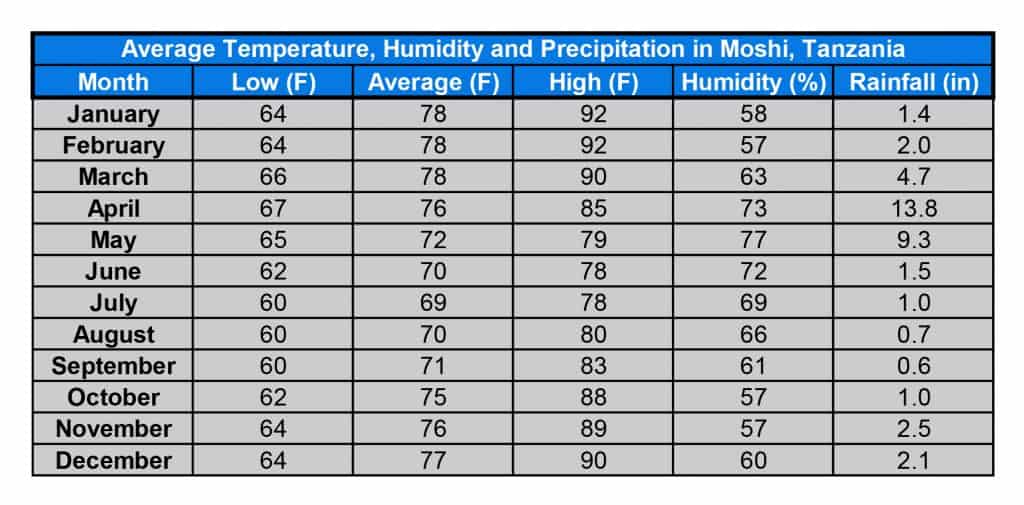
Why Does It Get So Cold on Kilimanjaro?
Several factors contribute to the extreme cold on Mount Kilimanjaro. First and foremost is altitude. As you ascend, the air becomes thinner and can hold less heat. This results in a significant drop in temperature, particularly at night when the lack of atmospheric pressure leads to rapid cooling.
Additionally, the mountain’s position near the equator does not shield it from extreme temperatures at high elevations. The wind plays a significant role in lowering temperatures, particularly in the higher zones where there is little vegetation to act as a windbreak. Wind chill can make the air feel far colder than the actual temperature, increasing the risk of cold-related illnesses like hypothermia and frostbite.
What Gear Do You Need for the Cold on Kilimanjaro?

Climbing Kilimanjaro requires careful preparation for the cold. Bringing the right gear is critical to ensuring both comfort and safety.
- Layering System:
A good layering system is essential. Start with moisture-wicking base layers to keep sweat off your skin. Add insulating midlayers, such as fleece, to retain body heat. A waterproof and windproof outer layer protects against the elements. Finally a thick, substantial down jacket provides the necessary warmth when temperatures drop below freezing. It is most common for climbers to wear four to six layers on top and three layers on bottom on summit night. Use this as a starting point for your outfit, but note that you may need to wear more. - Warm Headgear:
A warm hat is important for maintaining body heat. Make sure it covers your ears entirely. Much of your body’s heat is lost through the head, so keep it covered in colder zones. - Gloves:
Insulated gloves or mittens are required to protect your hands from the cold. Bring two pairs of gloves—a light pair and a heavy pair. - Footwear:
Sturdy, warm boots or waterproof shoes are recommended for Kilimanjaro’s arctic zone. Wearing gaiters will keep the wind, rain and snow out and help your feet stay dry and warm. - Sleeping Bag:
A four-season sleeping bag rated to at least 0°F (-18°C) is required for cold nights in the higher camps. A sleeping mat adds extra insulation from the cold ground.
By being properly equipped for the extreme cold, you can manage the fluctuating temperatures on Kilimanjaro and increase your chances of a successful summit. The cold can be daunting, but with the right preparation and mindset, it becomes just another part of the adventure.



















































